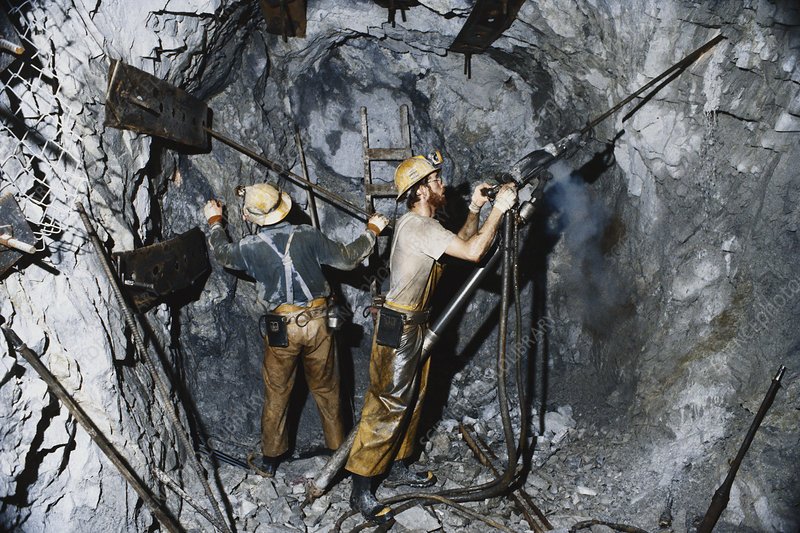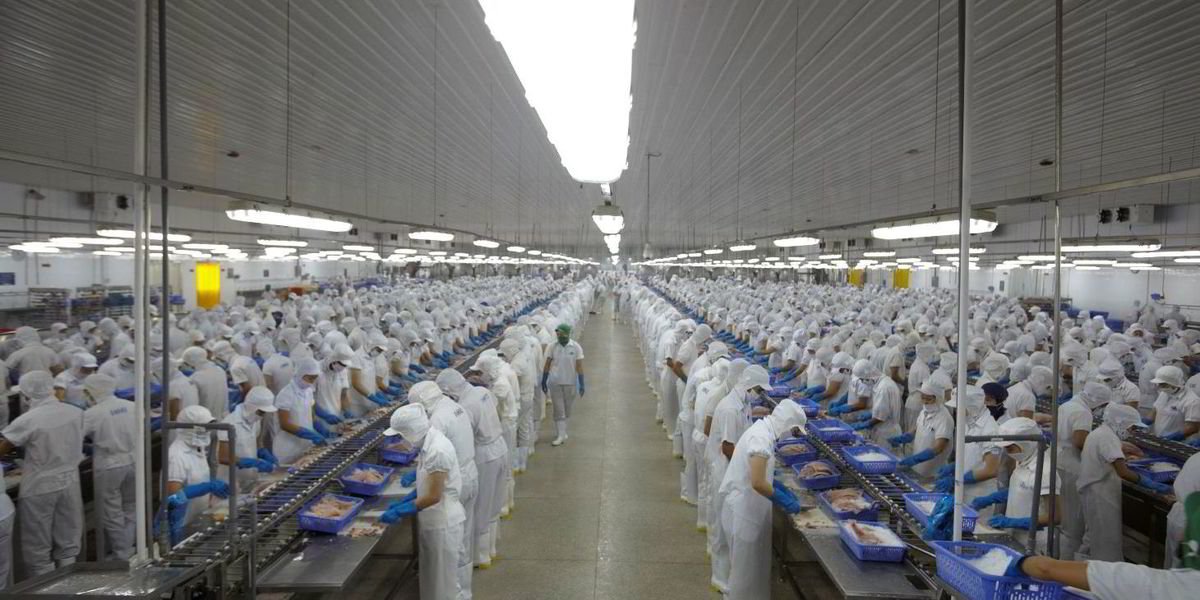The Environmental Impact of Film Photography
Film photography has seen a resurgence in popularity, with enthusiasts embracing its tactile nature and unique aesthetic. However, with this renewed interest comes an increased environmental impact that is often overlooked. In this blog post, we delve deeper into the various ways film photography affects the environment and discuss steps we can take to mitigate its negative consequences.
The Manufacturing Process: Raw Materials, Energy, and Water
The production of film is a complex process that relies on raw materials such as silver, gelatin, and petroleum-based plastics that all have an effect on the environment.
Silver
Silver is an essential part of film photography, present both in film negatives and printing paper. Silver in film exists in the form of small light-sensitive chemicals known as silver halides. These light-sensitive crystals are what determine your film’s sensitivity, contrast, and resolution, i.e. what makes your image an image. Black and white film usually only has one layer of silver halide crystals whereas color will have at least three. Crystals on color film work in combination with sensitizing dies that absorb into silver halide crystals and make it so the film will respond to other colors in a scene (opposed to just black and white). In layman’s terms, there is more silver on color film because it requires more information to make an accurate image, but silver is present in all film.
Silver mining is the extraction of silver ore from the Earth, which can be processed to obtain pure silver. The silver mining process can have significant environmental impacts, including habitat destruction, water pollution, and greenhouse gas emissions.
Habitat destruction can occur when mining operations clear forests, move vast amounts of earth, or construct large pits to access the silver ore. This not only disrupts local ecosystems but also displaces wildlife and can lead to soil erosion and loss of biodiversity.
Water pollution is another significant concern in silver mining. Cyanide and mercury are often used in the extraction process to separate silver from the ore. If not properly managed, these toxic chemicals can contaminate nearby water sources, posing serious threats to aquatic life and human health. Acid mine drainage is another issue, where acidic water containing high concentrations of heavy metals can leach from mines, polluting waterways and impacting ecosystems.
Greenhouse gas emissions are also associated with silver mining, as fossil fuels are consumed to power mining equipment, transport ores, and process the mined material. These emissions contribute to climate change and its wide-ranging effects on the environment and human societies.
The amount of silver in film negatives can also vary depending on the film type and its sensitivity (ISO). In general, the more sensitive the film, the more silver it contains. A typical 35mm film negative might contain around 5 to 10 milligrams of silver per frame, though this is a rough estimate and can vary.
The environmental impact of silver mining, coupled with the fact that silver is a finite resource, highlights the importance of promoting sustainable practices in film photography and is something to be aware of when shooting and purchasing film.
Miners drill blast holes and set rock bolts in an Idaho silver mine ©THEODORE CLUTTER / SCIENCE PHOTO LIBRARY
Petroleum-Based Plastics
Petroleum-based plastics play a significant role in the production and distribution of film. When referring to petroleum-based plastics it’s helpful to think of them as basically any cheap, common plastic. These plastics are derived from fossil fuels, such as crude oil and natural gas, both non-renewable resources. The production of petroleum-based plastics has substantial environmental impacts, including greenhouse gas emissions, pollution, and the depletion of natural resources.
In film photography, petroleum-based plastics are used for various purposes, including:
Film base: The film base is the transparent, flexible substrate that supports the light sensitive emulsion layer. Historically, cellulose nitrate and cellulose acetate were used as film bases, but they were replaced by polyester (PET) in the 1950s and 1960s due to their flammability and instability. Polyester is a petroleum-based plastic known for its strength, durability, and chemical resistance, making it an ideal material for film bases.
Film canisters: The majority of 35mm film canisters are made from petroleum-based plastics like polypropylene (PP) or high-density polyethylene (HDPE). These materials are lightweight, durable, and resistant to light and moisture, protecting the film from damage during storage and transportation.
Packaging materials: Film rolls are often packaged in plastic containers or wrapped in plastic film to protect them from light, moisture, and dust. These packaging materials are typically made from petroleum-based plastics, such as polyethylene or polyvinyl chloride (PVC).
The exact amount of petroleum-based plastics used in the production and distribution of film can vary depending on the film format, manufacturer, and packaging choices. However, it is undeniable that these materials play a crucial role in the film photography industry.
To reduce the environmental impact of petroleum-based plastics in film photography, several steps can be taken:
Reuse film canisters: Photographers can reuse film canisters for storage of small items, or other creative purposes, reducing the demand for new plastic canisters. This material is also recyclable. Get some ideas on how to reuse these plastic containers through Kosmo Photo’s list here.
Reuse film rolls. After the film is extracted and developed from the plastic roll, these rolls can be reused to load new film in a process called bulk loading. Bulk loading is the process of spooling a large roll of film (usually about 100 feet) into old canisters using a bulk loader. Both the roll of film and the bulk loader itself are light-sealed to prevent exposure. The benefit of bulk loading is that buying film on a spool is exponentially cheaper than buying individual canisters. When bulk loading you are also able to decide how many frames you want your roll to have. You could load the roll with 40+ frames or even just 10 to use as a test roll. Bulk loading allows you to reduce your environmental footprint and save money with increasingly expensive film prices. Watch Matt Day’s video on how to bulk-load film here.
Shoot sustainably: There are lots of ways to shoot film sustainably. One is by supporting film manufacturers that use recyclable or biodegradable packaging materials to help reduce plastic waste. If you are taking film out of a disposable camera, it is important to use a screwdriver-like tool to open the slot on the bottom of the camera where the film can just slide out. Breaking the entire casing takes much longer and ensures that the disposable cannot be used again and will be sent to the landfill. Places like Custom Camera Collection have been known to accept used disposables by mail to reuse and recycle. Contact your local camera manufacturers to inquire about similar programs. Another, fairly easier measure to take is to ditch disposable cameras. Tossing a camera away after a single use is wasteful for both the photographer and the environment. Even if you don’t want to commit to buying anything more than a plastic camera, there are cameras available that shoot just like disposables, but you can load multiple film rolls in them. A couple we recommend are the Ilford Sprite 35-II and the Kodak M35. Once you feel confident enough that you want to keep shooting film, there are other, better-built alternatives out there for purchasing. Check out Joshua Dunlap’s list of the best cameras for under $100 in 2023.


Gelatin
Gelatin is a necessary binding agent in film that attaches the silver crystals to the base and keeps them in place. The main ingredient in Gelatin is an animal protein extracted by boiling bones, muscles, tendons, ligaments, and skin from pigs and cows. As an animal byproduct, gelatin is an essential component of the meat industry. The meat industry as a whole has a large environmental impact in the form of deforestation, greenhouse gas emissions, water consumption and pollution.
It’s important to recognize while alternatives such as plant-based proteins are being heavily looked into and might offer a more sustainable future for film photography, it is highly unlikely that gelatin will be replaced. Gelatin has extremely effective properties and can be produced in high amounts at a low cost. There is solace to be found in the fact that as a byproduct, no animal is specifically killed for gelatin and the amount of gelatin used in film pails compared to that used in food, pharmaceuticals, and cosmetics. Whether or not the use of gelatin crosses an ethical line is a personal choice but regardless it’s important to be aware of the materials used to make film photography possible.
Vinh Hoan plant for collagen, gelatin production ©IntraFish Media
Chemicals in Film Processing: Hazards and Alternatives
It is no secret that chemicals used in film processing can be hazardous to the human body as well as to the environment. Developer, fixer, bleach, and stop can all cause skin and eye irritation, respiratory issues, and other health problems with too much exposure. These chemicals are also at risk of contaminating water sources, harming aquatic life, and contributing to air pollution when released into the atmosphere. As awareness of the potential hazards associated with traditional film processing chemicals grows, interest in alternative, more environmentally friendly methods has increased. Here are some alternatives you can use for these chemicals when developing at home and how to dispose of chemicals properly after use.
Chemical Alternatives
Caffenol: Caffenol is a homemade developer made from instant coffee, washing soda, and vitamin C powder. While not entirely hazard-free, it is less toxic and more environmentally friendly than traditional developers. Additionally, it produces unique and artistic results. When using this process it is best to stick to B&W processing unless you want your film to have a sepia tone. Watch a video on developing at home using caffenol here.
Eco-friendly commercial developers: Several manufacturers offer eco-friendly developers, which use more environmentally friendly chemicals and often have a longer shelf life, reducing waste. Examples include Kodak's Xtol developer and Ilford's Ilfotec DD-X.
DIY stop bath alternatives: Instead of commercial stop baths, some film photographers opt for homemade alternatives like vinegar and water, which can effectively neutralize the developer without posing significant health risks. Water is an extremely common substitute for stop baths, some professional labs often find it the preferable choice.
Proper Chemical Disposal
Never pour chemicals down the drain: Many film processing chemicals are toxic to aquatic life and can contaminate water sources if disposed of incorrectly.
Use a silver recovery unit: Fixer solutions contain silver, which can be harmful to the environment. Silver recovery units can extract silver from the fixer, allowing for proper disposal of the remaining chemicals and recycling of the recovered silver.
Contact your local hazardous waste facility: Many communities have hazardous waste facilities that accept used film processing chemicals for proper disposal. Contact your local facility for information on their requirements and drop-off procedures.
Reuse and recycle when possible: Many film processing chemicals can be reused multiple times before they become exhausted. Reusing chemicals not only saves money but also reduces the environmental impact associated with their disposal.
It is crucial to understand the processes and materials involved in the creation of the products we enjoy, as this awareness can lead to more informed and responsible choices. This knowledge is not intended to shame or guilt anyone into adopting sustainable practices, but rather to provide you with information that can help you make better decisions for yourself and the environment. This is not meant to dissuade you from shooting film but we hope to build a realistic picture of the resources used (that we often forget about) to make film photography possible. By understanding the impacts of our choices and creating ways for ourselves to circumnavigate harmful practices, we can take steps towards a more sustainable future while still enjoying our favorite hobbies and passions.


